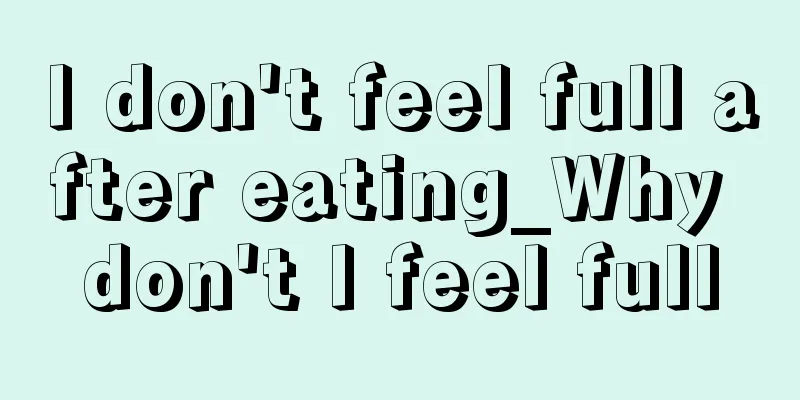Nonunion of femoral shaft fracture

|
As people age, their bones will gradually age, their body functions will deteriorate, and their body flexibility will begin to decline. Coupled with excessive fatigue and lack of rest, bone pain is very likely to occur. Some people have femoral shaft injuries and fractures. The femur is our thigh bone. If the fracture does not heal during treatment, what should we do? Different methods should be used to treat nonunion according to the cause and type of its formation. In general, the fracture needs to be well reduced, and the appropriate internal or external fixation materials should be used to stabilize the fracture. The need for bone grafting should be determined based on the condition of the fracture ends: for vascularized nonunion, as long as there is stable fixation, a connection can be achieved without bone grafting; while for ischemic nonunion, the sclerotic bone at the fracture ends needs to be removed, the medullary cavity needs to be opened, and bone grafting should be performed. Bone grafting is the most common and effective method for treating nonunion. There are many sources of bone, including autologous bone, allogeneic bone, and synthetic bone substitutes, among which autologous bone is the best bone grafting material. The treatment of segmental bone defects, a special type of nonunion, is more difficult. Depending on the specific situation, vascularized bone transplantation (such as free fibula transplantation, etc.), cortical osteotomy and bone migration can achieve good results. Of course, this requires high professional knowledge and skills of doctors. Actively improving the patient's metabolic and nutritional status before surgery, encouraging the patient to quit smoking, using the limbs as much as possible and performing adjacent joint functional exercises, and controlling infection can help improve the efficacy. In addition, low-intensity ultrasound, electrical and electromagnetic stimulation methods can be used to treat some patients with bone nonunion. Although the technical level in the field of trauma treatment is improving, with very complete nursing measures, advanced surgical techniques, newer internal fixation implants, and new auxiliary measures to promote fracture healing, nonunion of fractures still occurs frequently in trauma patients, especially those with high-energy injuries. Nonunion of femoral shaft fracture is a serious socioeconomic problem for patients. Long-term nonunion can lead to walking impairment, inability to work, reoperation and serious psychosocial problems. At the same time, the treatment of femoral shaft fracture nonunion is a huge challenge for trauma orthopedic surgeons. In treating this type of disease, many factors need to be considered, such as the initial treatment plan for the fracture, correction of deformity, control of infection, rapid recovery after surgery, etc. The Winquist–Hansen femoral shaft fracture classification system takes the degree of fracture comminution into account when classifying and assesses whether the fracture requires locking and nailing to determine the postoperative weight-bearing regimen for the injured limb and to prevent nonunion of femoral shaft fractures. Inappropriate mechanical and dynamic environment during fracture (such as insufficient fracture stability), insufficient blood supply, loss of fracture fragments, or the presence of infection are the main causes of fracture nonunion. In some cases, unexplained nonunion may occur despite appropriate treatment. There are also some special cases, such as patients with femoral shaft fractures and acute spinal cord injury. The non-union rate of femoral shaft fractures in these patients after conservative treatment is as high as 31%. There are many methods for treating nonunion of femoral shaft fractures, including intramedullary nail dynamization, bone plates, external fixation, plate replacement, and auxiliary treatment measures such as electrical or ultrasonic stimulation, autologous or allogeneic bone grafting, and BMP. In patients with segmental bone defects, vascularized bone grafting may be an option. Many authors recommend closed reamed intramedullary nailing alone or in combination with open bone grafting for the management of femoral shaft nonunion. The nonunion rate of femoral shaft fractures treated with intramedullary nailing varies from 1% to 20%, depending on the type of fracture and treatment technique. Repeated treatment of femoral shaft fractures will reduce the success rate of fracture nonunion, mainly because repeated treatment will damage the blood supply and periosteal membrane of local tissues and reduce the nutritional supply to the fracture site. Other methods for treating nonunion of fractures, such as replacement of intramedullary nails, dynamization of intramedullary nails, external fixation, and bone plates, have varying success rates, reported at 47%-100%. |
<<: What's wrong with my buttocks pain
>>: Complications of intertrochanteric fractures
Recommend
Ovarian cancer patients should eat foods containing chlorophyll and germ
In addition to taking grain and vegetable foods, ...
What is the pathological examination method for secondary liver cancer
Secondary liver cancer is also called metastatic ...
Which hospital is good for stage III lymphoma
Almost all lymphoma patients present with painles...
The difference between real stomach fire and false stomach fire
Traditional Chinese medicine believes that there ...
What causes high alkaliphilic granulocyte count?
Everyone has different cells, which are divided i...
What should patients with advanced liver cancer eat? Dietary considerations for advanced liver cancer
Many people are not very clear about some conditi...
Why do we need to dredge the meridians
There are different meridians in each part of the...
Uses of alkali
Alkali is a liquid chemical widely used in indust...
The process of enterohepatic circulation
Enterohepatic circulation refers to the process a...
10 hydration misunderstandings that will ruin your body
Daily hydration is for health, but do you know? W...
What is the reason for the thigh swelling
People who do not exercise for a long time will f...
Is lung cancer contagious? Here’s what you need to know about the contagiousness of lung cancer
Lung cancer is a respiratory disease. When the di...
Which examinations require fasting blood draws?
In daily life, I believe that many friends will b...
How to deal with too many dreams
Dreaming too much is not a good thing, because dr...
Is the cervical massage pillow useful?
Massage pillows are mainly used for patients with...









